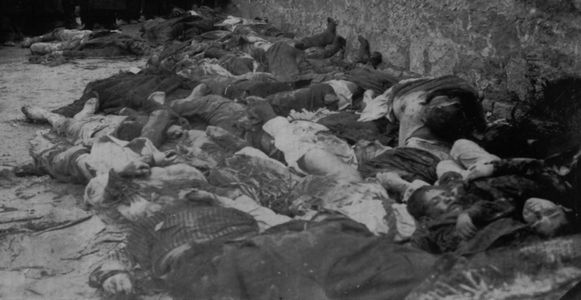The genocide of Azerbaijanis in March - April 1918
Making use of the situation after the I World War, February and October overthrows of 1917 in Russia, Armenians sought to capture the Caucasus’ biggest economic and administrative center - Baku. With that end in view, the Armenian National Council and “Dashnaktsutun” Party united their efforts with Bolsheviks. Note that Bolsheviks considered Baku and Azerbaijan as a part of the Soviet Russia; Dashnaks as a part of mythical “Great Armenia”. Their final ends being different notwithstanding, their opponent was one – indigenous Azerbaijani population which backed national parties, in the first turn, “Musavat”. To annihilate a political opponent, Bolsheviks jointly with Armenians deliberately took the course of ethnic purging. The Baku Soviet started implementing a criminal plan aimed at exterminating Azerbaijanis in the Baku province. Note that the Baku Soviets disposed of army composed mostly of Armenians and called “Red Guards”. To head the massacre, a Committee of Revolution Protection under the Baku Soviet was set up.
On March 30, 1918 the Armenian - Bolshevik “Red Guards” attacked Azerbaijani districts of Baku. By March 31, the attacks grew into the massacre, during which the Turkic-Moslem population of the city was exterminated regardless of its political affiliations. As a result of the March genocide, above 12,000 were killed in Baku. Armenians burnt houses, committed people to the flames, destroyed national architectural treasures, schools, hospitals, mosques and other erections and turned a greater part of Baku into ruins.
Bolshevic-Dashnak associations kept on exterminating Azerbaijanis in Guba, Salyan, Lenkaran districts.
From 3 to 16 April, Dashnak gangs committed bloody crimes against the peace population of Shamakhi. Over 7,000 peaceful Azerbaijanis were killed, 72 villages destroyed.
Dashnak gangs burnt 162 villages, exterminated above 16,000 Moslems in Guba district.
The genocide of Moslems (Azerbaijanis) went on till mid-1918 with above 50,000 Azerbaijanis killed.
Simultaneously attacks were underway on Azerbaijani villages of Irevan, Nakhchivan, Zangezur, and Karabakh. Bolshevik Stepan Shaumyan headed the massacre in Baku province and maintained permanent ties with Dashnak Andranik who ran the massacres in the western regions.
At stake was the very existence of the Azerbaijani people. It was the declaration of Azerbaijan’s independence, creation of armed forces and military aid of Turkey that saved the Azerbaijani people from complete extermination.
Under President of the Azerbaijan Republic Heydar Aliyev’s decree of 26 March 1998, the March of 31 is marked as Genocide Day of Azerbaijanis.
